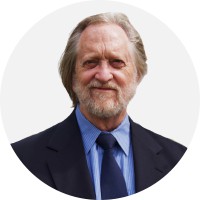The views expressed in our content reflect individual perspectives and do not represent the authoritative views of the Baha'i Faith.
Abdu’l-Baha noted that the more refined matter becomes, the more closely it begins to resemble the non-particulate, non-composite properties of spiritual reality:
As we look upon the universe, we observe that all composite beings or existing phenomena are made up primarily of single elements bound together by a power of attraction. Through this power of attraction cohesion has become manifest between atoms of these composing elements. – Abdu’l-Baha, The Promulgation of Universal Peace, p. 255.
Verily the body is composed of physical elements, and every composite must needs be decomposed. The spirit, however, is a single essence, fine and delicate, incorporeal, everlasting, and of God. – Abdu’l-Baha, Selections from the Writings of Abdu’l-Baha, p. 167.
Therefore, let’s proceed with our discussion of refinement by covering, in very broad terms, the emergence of the study now termed particle physics, paying particular attention to the last hundred and fifty years—because during this time the world of the microcosm has assumed such vital importance.
What is the Smallest Thing in the World?
For about two thousand years prior to the emergence of that new physics, scientists assumed that all material entities were composed of some microscopic atomic substance, some small, hard, primary building block. One of the first thinkers to conceive of an atomic theory was Leucippus of Miletus, though his student, Democritus, coined the term “atom”—because “atomos” in Greek means “indivisible”—around the middle of the 5th century BC. Material change, according to Democritus, is simply the rearranging of these basic particles.
 Further discourses on atomic theory were put forth by Epicurus in the 3rd century BC and by Lucretius in the 1st century BC. But the Greek, Roman, and Medieval scholars were not really much interested in studying the nature of these particulates. Their primary concern was in the opposite direction: how big is big? How is the universe organized? In particular, they devised theories that could support their various philosophical and religious views.
Further discourses on atomic theory were put forth by Epicurus in the 3rd century BC and by Lucretius in the 1st century BC. But the Greek, Roman, and Medieval scholars were not really much interested in studying the nature of these particulates. Their primary concern was in the opposite direction: how big is big? How is the universe organized? In particular, they devised theories that could support their various philosophical and religious views.
The schism between science and religion that becomes confirmed around the 14th and 15th centuries partially derives from these early attempts at a materialistic description of reality, as opposed to Plato, who believed that material reality is only an illusion, a metaphorical expression of the metaphysical realm of ideas and forms. Consequently, Catholic theologians and the church itself believed that materialist concepts, like Democritus’ atomic theory, were blasphemous—because they implied an autonomous material reality governed by natural laws rather than by Divine guidance.
With the advent of the 19th century, though, further study began to be made in theories about the particulate nature of matter. John Dalton suggested that each chemical might have its own unique kind of atom. By the close of the 19th century, there were theoretical suggestions that atoms themselves might have constituent parts—subatomic particles. In 1897 a physics professor at Cambridge discovered the electron, and by 1911 Ernest Rutherford accurately described the fundamental structure of an atom when he showed that most of the mass of an atom is in the center in what we now call the nucleus—a small dense composition of protons with a positive charge and neutrons with no charge.
Do the Smallest Things in the World Hold a Secret?
Most importantly from a Baha’i perspective, Rutherford postulated the theory that the structure of the atom parallels the structure of the solar system: the negatively charged electrons orbit around the positively charged nucleus, just as planets orbit our sun. This observation is reiterated by Abdu’l-Baha in a most profound way when he explains that the similitude between the structure and function of an atom and the solar system is not coincidence—that material reality at every level is parallel in structure:
… nature is subject to a sound organization, to inviolable laws, to a perfect order, and to a consummate design, from which it never departs. To such an extent is this true that were you to gaze with the eye of insight and discernment, you would observe that all things—from the smallest invisible atom to the largest globes in the world of existence, such as the sun or the other great stars and luminous bodies—are most perfectly organized, be it with regard to their order, their composition, their outward form, or their motion, and that all are subject to one universal law from which they never depart. – Abdu’l-Baha, Some Answered Questions, newly revised edition, p. 3.
This axiom assumes ever greater importance as we proceed in the other direction in studying those ever larger compositions as described by cosmology. But let us further examine this mystery of smallness as it relates to the Baha’i view of physical composition and the notion of refinement.
The concept of quantum physics followed shortly after Rutherford’s theory when, in 1913, Niels Bohr incorporated into this model the idea of quanta or packets of energy (photons), an idea developed a few years earlier by Max Planck. This important theory helped explain a number of phenomena related to energy and subatomic particles, and it also established the basis for much that was to follow in the study of subatomic particles and the attempt to discover what is, after all, the most finite discrete building block in material reality.
An atom consists mostly of space. The nucleus is one hundred-trillionth (1/100000000000) the size of the atom itself, and yet the smallest nucleus is massive compared to the size of an electron. The nucleus is about two thousand times as large as an electron, a fact that would indicate that the electron is virtually weightless and massless. But the study of the microcosm does not stop there.
We now know that the constituent parts of the nucleus—the protons and neutrons of an atom, collectively referred to as nucleons—are composite themselves. They consist of quarks, though unlike other constituents of the atom, the force that binds the quarks is so powerful that we are incapable of dividing them. Therefore, the quarks have not been studied in isolation, though we have identified groupings of quarks (hadrons), and these have been categorized: a hadron with three quarks called a Baryon, and hadrons with two quarks called Mesons. There are also are leptons—subatomic particles like electrons and neutrinos that seem to have no discernible components. Indeed, some believe the neutrino is an uncharged particle that may have no mass whatsoever.
The smallest building blocks of the universe, in other words, may not be blocks—since they may have no actual mass. So the smallest thing you can imagine may not be a “thing” at all.
















Comments
Sign in or create an account
Continue with Googleor